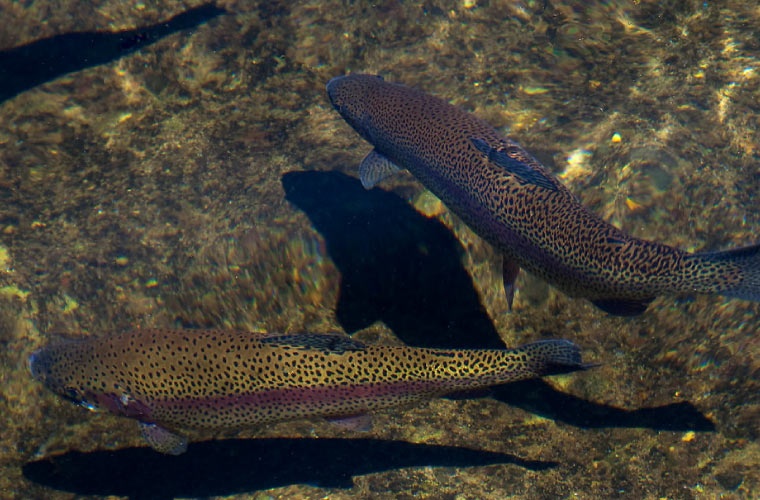
Pre-slaughter fasting is a common practice in aquaculture, helping to lower stress by reducing fish metabolic activity and enhancing product quality by emptying the digestive tract, thereby lowering the risk of impurities during processing and gutting.
Typically, recommended fasting periods vary between species and farming conditions, with a few days off-feed being standard. The exact timing depends on factors like water temperature and other farm management practices.
Recently, a study led by researchers from Universidad Complutense de Madrid, La Universidad Politécnica de Madrid y La Universidad Autónoma de Barcelona has taken a scientific approach to explore how fasting requirements may vary for rainbow trout (Oncorhynchus mykiss) depending on the season and, consequently, the water temperature in the farming environment.
In this way, the study not only ensures optimal processing and market readiness of the product but also addresses fish welfare by linking metabolic stress levels with antioxidant capacity.
The researchers conducted the experimental phase at the aquaculture facilities of the Universidad Politécnica de Madrid, using a RAS system to maintain controlled conditions.
They worked with 495 rainbow trout, which were housed in tanks and subjected to various fasting durations measured in degree days. This unit combines time and temperature to estimate their cumulative effect on the fish's biological processes. For instance, with a water temperature of 10°C, a 50 degree-day fasting period would mean not feeding the fish for 5 days. At 20°C, a 50 degree-day fast equals 2.5 days.
With this in mind, the fish were fasted for 0, 50, and 100 degree days during two seasons: summer (22°C) and winter (8°C).
Parameters such as stress levels and metabolic adaptation were analysed by evaluating weight, cortisol levels, glucose, lactate, triglycerides, fatty acids, and antioxidant enzyme activity. Additionally, changes in skin and liver colour, as well as liver gene expression, were observed.
Based on the results, the researchers concluded that during winter, the fish could tolerate fasting periods of up to 100 degree days — approximately 12 days at 8°C. In contrast, in summer, the fish could only tolerate shorter fasting periods, with a maximum of 50 degree days, just over 2 days.
As noted by Andrea Martínez, the study’s lead author, the specific data collected showed a result of 58.7 degree days in winter, equivalent to 6 days of fasting, and 114.5 degree days in summer, or 13 days. This was adjusted as closely as possible to the ideal of 50 and 100 degree days in both tests, based on the seasonal daily average.
The researcher highlights that these findings provide fish farmers with guidelines to adjust fasting duration based on seasonal temperatures, thus optimising fish welfare.
She also points out that rainbow trout are cold-water fish, so in summer, it’s crucial to reduce pre-slaughter fasting periods to minimise the impact on their wellbeing.
This study’s results offer a practical guide for establishing fasting strategies aimed not only at boosting productivity but also at ensuring a high-quality product for consumers, while promoting sustainable and ethical practices in trout farming.
Reference:
Martínez Villalba, A., De la Llave-Propín, Á., De la Fuente, J., Ruiz, N., Pérez, C., González de Chavarri, E., Díaz, M. T., Cabezas, A., González-Garoz, R., Villarroel, M., & Bermejo-Poza, R. (2025). Seasonal comparison of uniform pre-slaughter fasting practices on stress response in rainbow trout (Oncorhynchus mykiss). Aquaculture, 596, 741750


